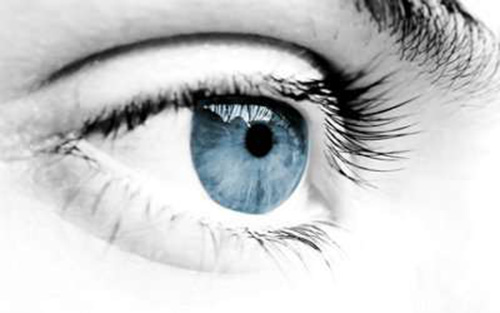
(Credit: Universidad Politécnica de Madrid)
UPM researchers have developed an optical biosensor with an easy, fast and affordable method of read-out that allows the in vitro detection of a biological material. The results obtained are promising for the diagnosis of dry eye diseases.
Due to the increasing demand of diagnosis for diverse eye diseases, the Optics, Photonics and Biophotonics group from Universidad Politécnica de Madrid (UPM) has developed a Point-of-Care (PoC) Optical Reading Device that, thanks to a patented technology by researchers of this group, allows us to in vitro detect very small concentrations of biological material in a rapid and affordable way.
The first trials seem to be effective for dry eye diagnosis with patient’s tears. Besides, its usage could be applied to other diseases and even be extended to other areas such as agriculture and food.
In 1992, the World Health Organization published a relevant classification of diseases and injuries related to the eye. Since then such classification has progressively increased and this has resulted in a high demand of diagnoses for diverse ocular pathologies. Aware of this need, researchers from the Optics, Photonics and Biophotonics group at the Center for Biomedical Technology of UPM (CTB-UPM) started to work on the development of a fast diagnosis device for these types of diseases such as Dry Eye Disease.
Over the last years, the prevalence of dry eye syndrome has dramatically increased. Its symptoms are eye irritation, redness and fatigue, among others, and it can cause retinal detachment and loss of vision in the most serious stages of the disease. Therefore, the early detection of such disease is essential. However, these evidence can be confused with other eye affections which are not related to DED. Fortunately, dry eye disorder also affects tear composition by varying its concentration of proteins. These rates, also called biomarkers, are always found related to a disease, dry eye in this case and are the elements needed for the diagnosis.
Thanks to this technology developed by UPM researchers, licensed to BIOD S.L, we can in vitro detect lower concentration (in the range of nanograms per milliliter) of certain biological materials (bacteria, virus, proteins and so on) in the same way professional labs do to detect these types of diseases.
The advantage of the new device compared to the traditional devices is that it is portable and can be placed in a medical center. In addition, it is easy to use and this feature is of a great help for non-qualified personnel. Another feature of this device it that is label-free, which means that does not require labeling to amplify the response (enzymes, fluorophores, gold particles…) what results in saving costs.
The readout method of this PoC device is based on the change of optical properties of the sensors when biological material is added. Therefore, simply by monitoring the spectral response of the reflected light we can determine the amount biological molecules in the surface.
The main issue when analyzing the tear of patients is the limited volume of sample that can be obtained since they hardly achieve five microlitres, which makes difficult its manipulation and examination. Researchers have solved this problem by developing a sensor surface in which some bioreceptors (antibodies) related to the target proteins are immobilized and can host samples of even a microlitre without being evaporated.
Besides, there are other problems in the case of tears analysis since they have proteins, salts and other components that can interfere with the diagnosis. However, this has been also solved with the selection of antibodies made and the detection of the only protein related with DED, the Matrix metallopsidase 9, what proves the right working of this device.
Nowadays, the group is working on other two biomarkers for dry eye disease and they expect to achieve the same good results, they aim to integrate all the biomarkers in one and develop a dry eye diagnosis kit.
According to the researcher Beatriz Santamaría, “this technology is very versatile and could be also used for other diagnoses with other samples such as blood, urea and saliva and not only in the medical field but in other fields such as agriculture or food industry.”




